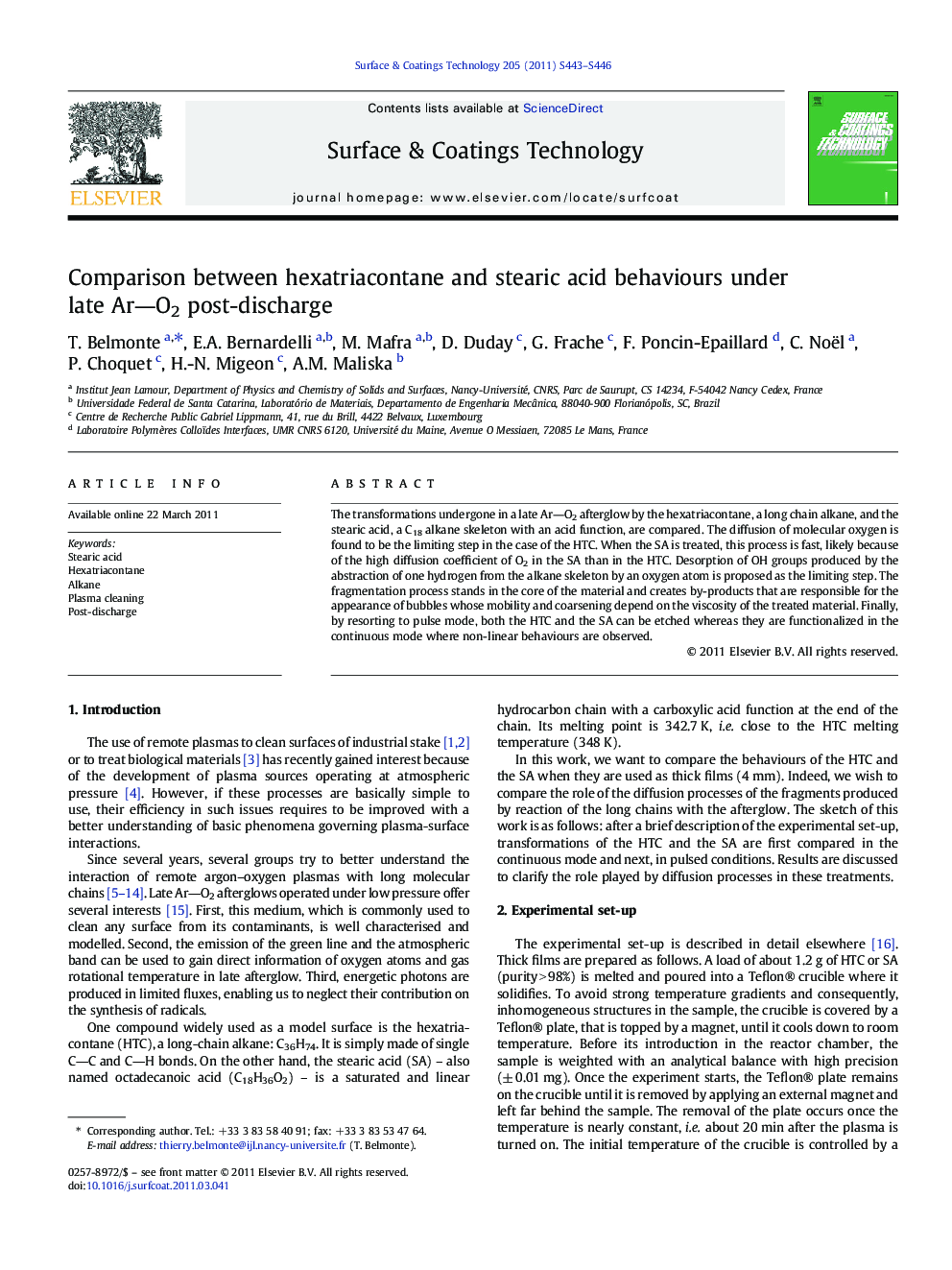| Article ID | Journal | Published Year | Pages | File Type |
|---|---|---|---|---|
| 10668569 | Surface and Coatings Technology | 2011 | 4 Pages |
Abstract
The transformations undergone in a late ArâO2 afterglow by the hexatriacontane, a long chain alkane, and the stearic acid, a C18 alkane skeleton with an acid function, are compared. The diffusion of molecular oxygen is found to be the limiting step in the case of the HTC. When the SA is treated, this process is fast, likely because of the high diffusion coefficient of O2 in the SA than in the HTC. Desorption of OH groups produced by the abstraction of one hydrogen from the alkane skeleton by an oxygen atom is proposed as the limiting step. The fragmentation process stands in the core of the material and creates by-products that are responsible for the appearance of bubbles whose mobility and coarsening depend on the viscosity of the treated material. Finally, by resorting to pulse mode, both the HTC and the SA can be etched whereas they are functionalized in the continuous mode where non-linear behaviours are observed.
Related Topics
Physical Sciences and Engineering
Materials Science
Nanotechnology
Authors
T. Belmonte, E.A. Bernardelli, M. Mafra, D. Duday, G. Frache, F. Poncin-Epaillard, C. Noël, P. Choquet, H.-N. Migeon, A.M. Maliska,
